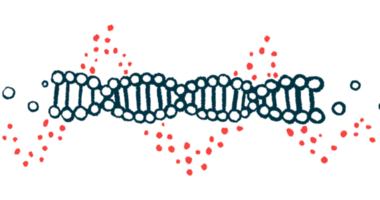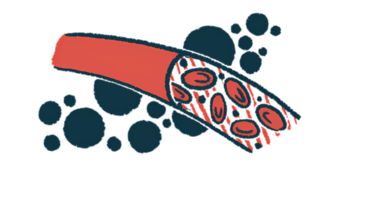Hympavzi approved in EU for hemophilia A, B, without inhibitors
Therapy will also be available in US through prescription by year's end

Pfizer’s Hympavzi (marstacimab) has been approved in the European Union (EU) to prevent or reduce the frequency of bleeding episodes in adults and children, ages 12 and older, with severe hemophilia A or hemophilia B who weigh at least 35 kg (77 pounds) and haven’t developed neutralizing antibodies, called inhibitors, that can limit how well factor replacement treatment works.
With the European Commission’s approval, which happened earlier than anticipated, Hympavzi has become the first once-weekly, subcutaneous, or under-the-skin, injection therapy for severe hemophilia B. It’s also the first to be administered using a prefilled pen or syringe.
Hympavzi was recently approved in the U.S., where it’s expected to be available by prescription before the end of the year. Along with its approval in all 27 countries of the EU, the drug is also available in non-EU members, Iceland, Liechtenstein, and Norway.
Hympavzi’s approval marks Pfizer’s second for hemophilia this year after Beqvez (fidanacogene elaparvovec), its one-time gene therapy for hemophilia B, was approved in the U.S., the EU, and in Canada. The company’s experimental gene therapy for hemophilia A, giroctocogene fitelparvovec, is in Phase 3 clinical testing.
“This approval builds on Pfizer’s more than four-decade commitment to improve the standard of care in hemophilia, and we look forward to delivering this medicine that reduced bleeds as compared to factor prophylaxis and, importantly, requires limited preparation, meeting a key need for eligible patients,” Alexandre de Germay, chief international commercial officer and executive vice president at Pfizer, said in a company press release.
How does Hympavzi work in hemophilia?
In hemophilia, the blood doesn’t clot properly due to missing or dysfunctional clotting proteins — factor VIII (FVIII) in hemophilia A and factor IX (FIX) in hemophilia B. Without proper clotting, patients are at an increased risk of excessive bleeding, including internally into the joints.
“Hympavzi offers a first-in-class treatment option for people living with hemophilia, a disease that often leads to recurring joint bleeds and can impact daily activities as simple as climbing stairs,” Germay said.
While treatment for hemophilia has improved, many patients still have frequent bleeding episodes that require into-the-vein, or intravenous, infusions of factor replacement therapies multiple times a week, making preparation challenging and time-consuming.
“There is a considerable treatment burden associated with the standard-of-care options for hemophilia A and B, including time-consuming preparation and administration of infusions and injections, potentially causing missed doses and an increased risk of bleeding,” said Laurent Frenzel, MD, PhD, the head of the Hemophilia Treatment and Research Center at the Necker-Enfants Malades Hospital in Paris.
By blocking tissue factor pathway inhibitor (TFPI), a protein that naturally prevents blood clotting, Hympavzi promotes clotting and helps prevent bleeding episodes. It’s given at a loading dose of 300 mg, then once a week at 150 mg. The dose may be adjusted based on body weight and bleed control.
Clinical testing of Hympavzi
Its approval in the U.S. and EU was based on data from BASIS (NCT03938792), a Phase 3 clinical study that’s testing how safe and effective Hympavzi is for adults and adolescents with severe hemophilia A or B without inhibitors.
Preventive Hympavzi treatment reduced the annualized bleeding rate for treated bleeds by 35% over routine prophylaxis with FVIII or FIX. The most common side effects included reactions at the site of injection, headache, itching, and high blood pressure.
Patients with or without inhibitors who complete BASIS can enroll in an open-label extension (NCT05145127) sponsored by Pfizer where they’ll continue to receive Hympavzi for up to seven years to check its long-term safety and efficacy.
In an interim analysis, patients without inhibitors showed a mean annualized bleeding rate for treated bleeds of 2.79 after up to an additional 16 months of follow-up. BASIS is also evaluating how well Hympavzi works for patients with inhibitors and data is expected next year.
Hympavzi is also being tested over a year in BASIS KIDS (NCT05611801), an open-label Phase 3 clinical study enrolling up to 100 adolescents and children as young as 12 months with severe hemophilia A or moderately severe to severe hemophilia B, with or without inhibitors. The results are expected in 2028.






